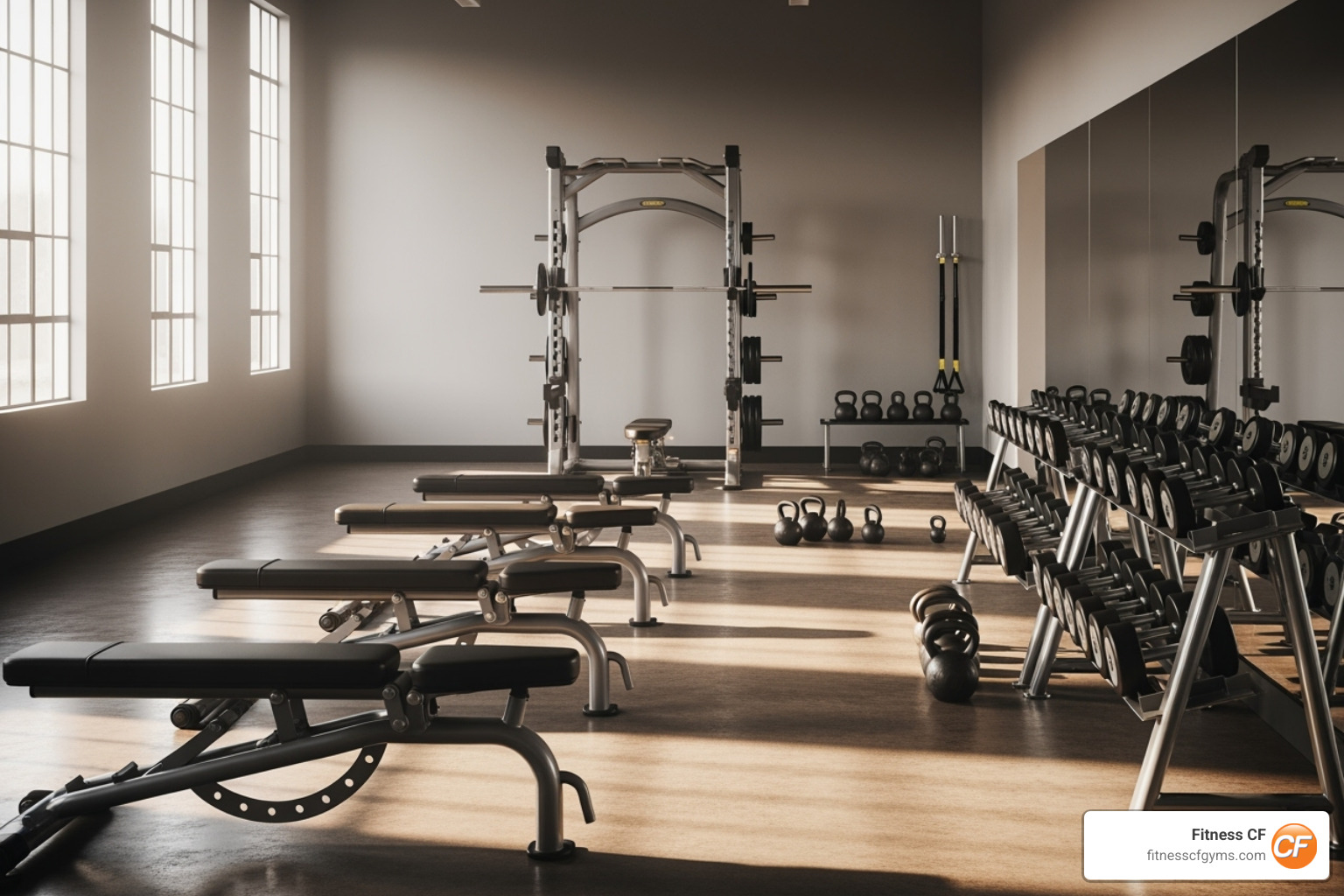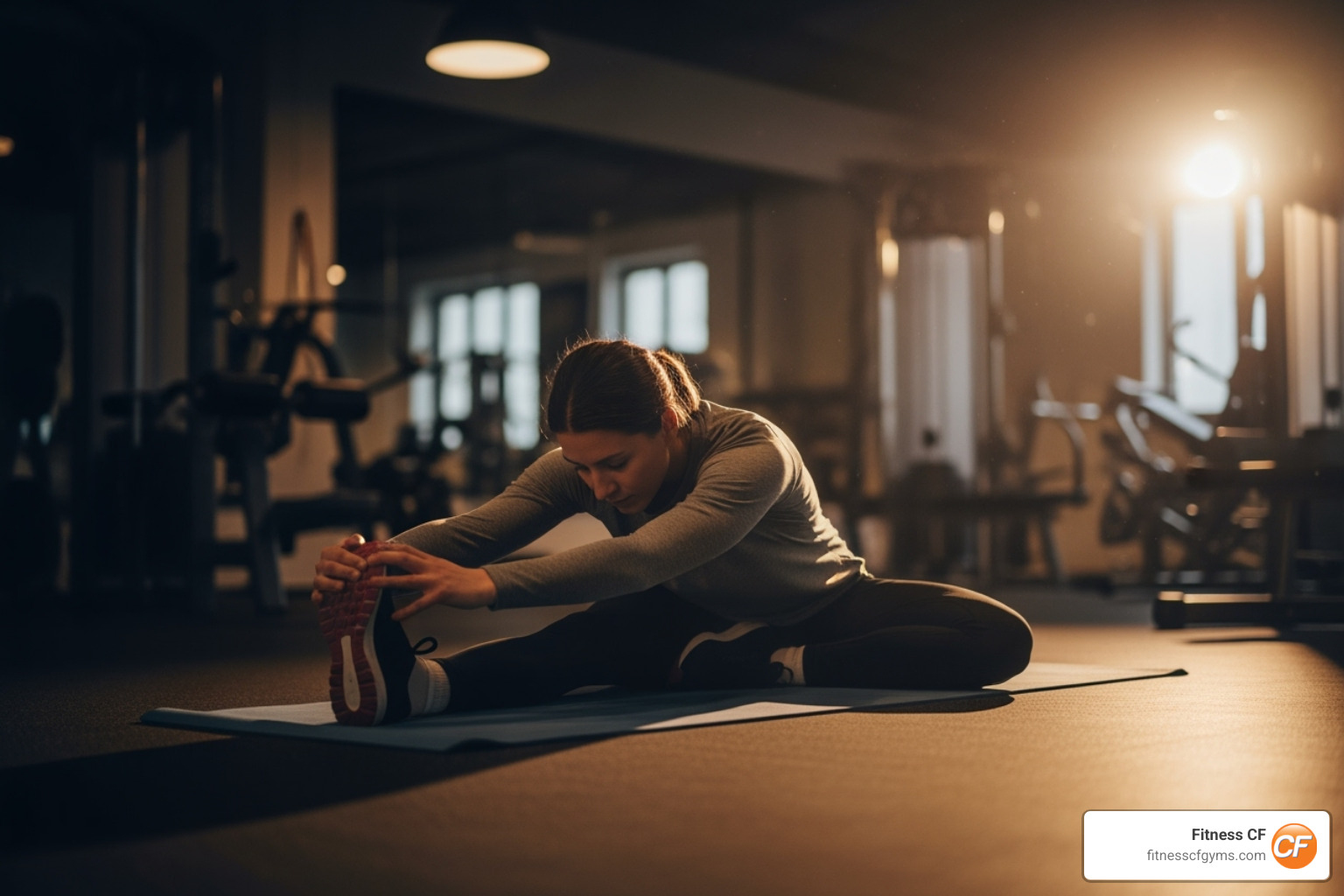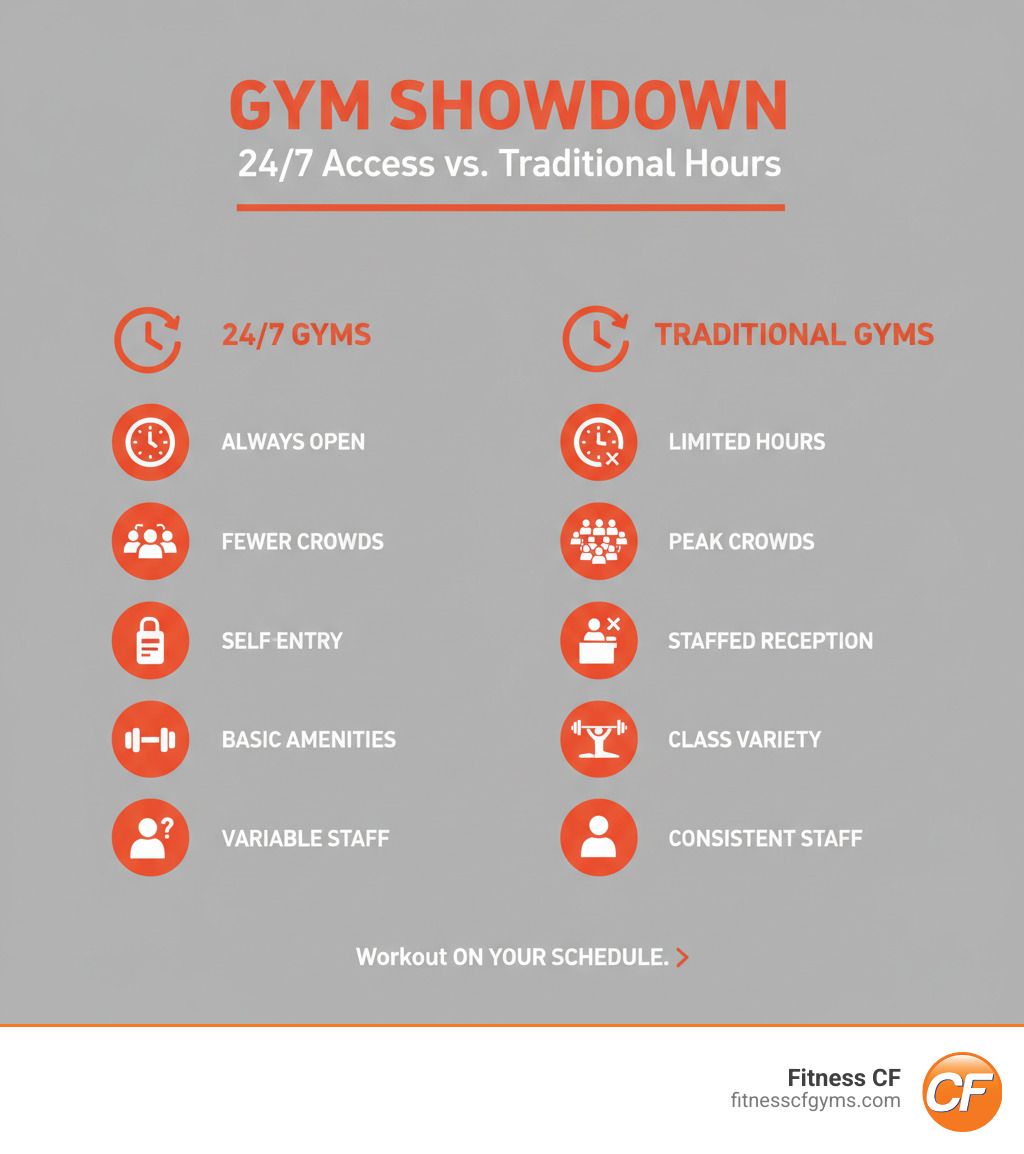Why a Flexible Fitness Routine is Key to Modern Wellness
Flexible fitness options are becoming essential for busy professionals, shift workers, and anyone who can’t fit exercise into a traditional 9-to-5 schedule. Whether you work irregular hours, juggle family responsibilities, or simply prefer quieter workout environments, having the ability to exercise on your own time offers the flexibility you need.
Quick Answer: Best Practices for Flexible Fitness:
- Consistency over intensity is key for long-term results.
- Listen to your body and exercise when you have the most energy.
- Prepare ahead by scheduling workouts like appointments.
- Focus on well-rounded routines that include both strength and cardio.
The demand for workout flexibility has grown significantly, driven by our increasingly dynamic work schedules and busy lifestyles. This shift makes perfect sense. Modern life doesn’t follow a standard schedule anymore. Parents may need to exercise after the kids go to bed, while others might finish long shifts at odd hours. Students often study late and may prefer a workout when they can de-stress and focus.
Working out at a time that suits you offers surprising benefits for both your body and mind. Many people find they sleep better after evening exercise, experience fewer distractions, and achieve better focus during their training sessions.
Maintaining a consistent exercise routine is one of the most powerful things you can do for your health. Finding a way to fit it into your unique schedule is often the key difference between achieving your fitness goals and giving up entirely.

The Surprising Perks of a Focused Workout
There’s something magical about finding a time to exercise when the rest of the world is winding down. The usual chaos of the day can melt away, leaving you with a peaceful sanctuary dedicated entirely to your fitness goals.
Fewer distractions means you can focus completely on your routine. When your environment is calm, you can move seamlessly from one exercise to another without breaking your rhythm, whether you’re doing bodyweight circuits, yoga, mobility work, or lifting with the equipment you have available.
The psychological benefits run deeper than just convenience. Many people describe their workouts as their stress relief ritual—a way to shed the day’s tensions and replace them with endorphins and accomplishment. There’s something incredibly satisfying about ending your day on such a positive, empowering note.
Increased focus becomes almost effortless in quieter hours. Without the usual distractions, you can truly tune into your body. You’ll notice your form improving, your breathing becoming more intentional, and that crucial mind-muscle connection strengthening with each rep.
This flexibility for any schedule is a game-changer, especially for shift workers or parents who finally get free time after a long day. Your fitness routine no longer needs to compete with traditional business hours.

When you can work out on your terms, fitness stops feeling like another chore and starts becoming something you genuinely look forward to. Healthy living should work around your life, not the other way around.
Benefits for Your Body and Mind
The physical and mental rewards of regular exercise are profound, regardless of the hour. Your body responds beautifully to movement whenever you can fit it in.
Improved sleep quality is one of the most unexpected benefits. While it sounds counterintuitive, moderate exercise a few hours before bed actually helps many people achieve deeper, more restorative sleep. Your body uses this time to recover and rebuild, making those workouts surprisingly effective for overall wellness.
Improved muscle growth happens naturally when you can maintain consistent intensity throughout your session. Without interruptions, you can focus on progressive overload—gradually increasing weight, reps, or time under tension. This consistency is crucial for building strength and muscle mass.
The better mind-muscle connection you develop in a focused environment pays dividends for every future workout. When you can truly concentrate on engaging specific muscle groups, you’re not just lifting weights—you’re training your nervous system to work more efficiently.
Uninterrupted training flow keeps your heart rate elevated and your momentum strong. Cardiovascular benefits increase when you can move smoothly between exercises, whether you’re doing circuit training or simply minimizing rest periods between strength sets.
Perhaps most importantly, having a flexible schedule dramatically improves workout consistency. Consistency trumps intensity every time when it comes to long-term health benefits. When you remove scheduling barriers, you remove excuses, making it easier to build the sustainable fitness habits that truly transform your health and well-being.
The Pillars of an Effective Fitness Routine
An effective fitness plan is built on a few key pillars that work together to improve your overall health. Understanding these components helps you create a balanced routine that delivers real, lasting results.

First is a commitment to proper form and a safe environment. A clear, well-lit space helps you focus on your movements and maintain energy during your sessions. Feeling comfortable in your surroundings is essential for a positive workout experience.
Cardio options like brisk walking, jogging, cycling, swimming, jump rope, or dance are powerful ways to burn calories and strengthen your heart. Regular cardiovascular exercise improves circulation, boosts mood through endorphin release, and builds the stamina you need for daily activities. It’s the foundation of endurance and heart health.
Strength training is equally vital for a well-rounded physique and functional health. Whether using your bodyweight, resistance bands, dumbbells, or kettlebells, building strength brings incredible benefits like increased bone density, improved metabolism, better insulin sensitivity, and more confident movement in everyday life.
If you have them, free weights offer unlimited exercise possibilities, allowing you to build muscle, improve coordination, and develop the kind of functional strength that makes carrying groceries or playing with kids easier. They challenge your stability and engage more muscles than many machine-based movements.
Finally, cleanliness and hygiene support a healthy routine. Keep your equipment clean, wipe down surfaces you’ve used, and wash your hands before and after your session. Good hygiene helps you stay healthy and comfortable while you train.
Maximizing Your Workout Session
There’s something magical about having a workout space to yourself. The quiet atmosphere and the freedom to move at your own pace create the perfect environment for a truly focused session. When you’re not feeling rushed, you can dive deeper into your fitness journey and really connect with what your body needs.
Strength training becomes a completely different experience in a calm setting. You’ll find benefits that go far beyond just building muscle. Regular strength work boosts your metabolism, strengthens your bones, and improves your balance and coordination. Focused time lets you master movement patterns—think squats, hip hinges (deadlift variations), pushes, pulls, and carries—so you can perfect your technique without distraction.
The cardiovascular exercise experience transforms too. Whether you prefer brisk walking, outdoor cycling, rowing, hiking, jump rope, shadowboxing, or a steady jog, you can settle into your rhythm without interruption. Cardio work strengthens your heart, improves endurance, and helps manage stress levels. There’s also something peaceful about a steady cardio session in a calm setting—you can listen to your favorite playlist, catch up on podcasts, or simply enjoy the meditative rhythm of your movement.
Proper warm-ups are even more important when your body might be winding down from the day. Those 5-10 minutes of light movement and dynamic stretching are crucial. Think arm circles, leg swings, and gentle cardio to get your blood flowing. This preparation helps prevent injuries and ensures your muscles are ready for the work ahead.
Don’t skip your cool-down either. This is especially vital for evening workouts because it helps signal to your body that it’s time to transition from high energy to rest mode. Those gentle static stretches, held for 20-30 seconds each, improve flexibility and reduce muscle soreness. More importantly, they help your nervous system shift gears for better sleep later.
Research on the effects of evening exercise shows that moderate evening workouts can actually improve sleep quality for many people, contrary to what you might expect.

Effective Workout Strategies
The beauty of having a flexible schedule and a focused environment is the freedom to choose workout styles that really maximize your time and results. You can spread out, take your time, and focus on techniques that build strength and endurance efficiently.
Compound lifts shine in this environment. These powerhouse movement patterns work multiple muscle groups at once, giving you the biggest bang for your buck. When you can take your time, you can really dial in your squat depth, perfect your hip-hinge mechanics, or focus on that mind-muscle connection during presses and rows. The quiet atmosphere lets you concentrate on what matters most: proper technique and progressive improvement.
Supersets and circuit training become incredibly effective when you have space to move freely. By pairing two exercises back-to-back with minimal rest, you keep your heart rate elevated while building strength. Picture moving seamlessly from push-ups to rows, or combining squats with overhead presses. This creates an efficient, time-saving workout flow.
High-Intensity Interval Training (HIIT) can push your cardiovascular fitness to new levels using simple movements like sprints, burpees, jump rope intervals, mountain climbers, or kettlebell swings (if available). Short bursts of effort followed by brief recovery periods are highly effective and time-efficient.
Focused accessory work becomes almost meditative in a peaceful setting. After your main lifts, you can really tune into those smaller muscle groups with isolation exercises. Whether it’s bicep curls, tricep work, glute bridges, calf raises, or core strengthening, the quiet environment helps you feel every rep and maintain excellent form.
Full-body routines work beautifully for flexible sessions because you can flow from one exercise to the next without conflict. Here’s a sample routine: Start with a gentle 5-10 minute warm-up, then move through squats for 3 sets of 8-12 reps, followed by bench presses (or push-ups). Add bent-over rows and overhead presses for upper body balance, then finish with planks for core strength. Wind down with 5-10 minutes of static stretching, focusing on the muscles you just worked.
The key is listening to your body and adjusting as needed. Stay hydrated, respect your limits, and enjoy the unique advantages that come with having a peaceful, well-equipped space to yourself.
Making Fitness a Sustainable Part of Your Life
Choosing to prioritize your health isn’t just about convenience—it’s about fundamentally changing how fitness fits into your life. Many people struggle to maintain consistency simply because traditional schedules don’t match their reality. That’s where a flexible approach to fitness becomes a game-changer.
The difference between a rigid and a flexible routine goes beyond just the time of day. A rigid schedule can create pressure, making you feel like you’ve failed if you miss a session. A flexible mindset allows you to adapt, ensuring that fitness remains a positive force in your life.
This flexibility creates real value in your daily routine. Instead of rushing through a workout, you can take your time, focus on proper form, and actually enjoy the process. You’re not fighting against the clock or feeling stressed about fitting it all in.
Building a sustainable fitness habit often comes down to a few key principles. When you’re looking for a routine that fits your needs, consistency is more important than intensity. A moderate workout three times a week is far better than one heroic, exhausting session that leaves you too sore to move.
Finding activities you enjoy is also critical. If you dread your workout, you won’t stick with it. Explore different types of exercise—from strength training and running to dancing or yoga—until you find something that feels less like a chore and more like a reward.
Finally, setting realistic goals keeps you motivated. Instead of aiming for a dramatic transformation overnight, focus on small, achievable milestones, like adding one more rep, lifting a little heavier, or running for one extra minute. These small wins build momentum and lead to big results over time.

Finding the right approach means finding one that truly supports your lifestyle and fitness goals. A healthy lifestyle is a marathon, not a sprint, and flexibility is what helps you stay on course for the long haul.
Frequently Asked Fitness Questions
When you’re committing to a healthier lifestyle, it’s natural to have questions about how to make your efforts as effective as possible. These are some of the most common concerns we hear from people on their fitness journeys.
Is working out late at night bad for sleep?
This is a very common question, and the answer might surprise you. While intense exercise very close to bedtime can be disruptive for some people, many individuals actually find that a late-night workout helps them de-stress and leads to improved sleep quality.
The key factors are timing and intensity. A vigorous, high-intensity workout right before you hop into bed might keep your heart rate and body temperature elevated, making it harder to drift off to sleep. However, moderate exercise—particularly strength training or steady-state cardio completed a few hours before sleep—can actually promote relaxation and deeper rest.
Your body is unique, and finding what works best for your individual rhythm is crucial. Listen to your body and experiment to find your sweet spot.
What’s more important: cardio or strength training?
The best answer is that a truly effective fitness plan includes both. They offer different but complementary benefits for a healthy lifestyle. Cardiovascular exercise is essential for heart health, endurance, and managing weight. Strength training is crucial for building muscle, increasing metabolism, strengthening bones, and improving body composition.
Instead of choosing one over the other, aim to incorporate both into your weekly routine. You can dedicate different days to each, or combine them in the same session for a highly efficient workout.
How do I stay motivated to work out consistently?
Consistency is the secret ingredient to long-term fitness success, but staying motivated can be tough. A few strategies can help. First, set clear, realistic goals. Knowing what you’re working toward provides direction. Second, find a workout buddy. Having someone to hold you accountable makes it much harder to skip a session. Third, track your progress. Seeing how far you’ve come—whether it’s lifting heavier, running faster, or just feeling more energetic—is a powerful motivator.
Finally, be kind to yourself. Everyone has off days. If you miss a workout, don’t let it derail your entire week. Just get back on track with your next scheduled session. The goal is progress, not perfection.
Conclusion
Embracing a flexible approach to fitness can completely transform your relationship with your health. Throughout this guide, we’ve explored how breaking free from a rigid schedule can remove the barriers that keep so many people from achieving their goals. When you can exercise on your own terms, it becomes something you can actually look forward to.
The benefits extend far beyond just convenience. Regular strength training helps build lean muscle mass, increases your metabolism, and strengthens your bones—benefits that compound over time when you can maintain consistency. Cardiovascular exercise improves your heart health, boosts energy levels, and enhances mental clarity. When you have the freedom to work out whenever your body feels ready, you’re more likely to stick with both types of training.
The psychological advantages are equally powerful. Regular workouts provide a unique opportunity for stress relief and mental clarity. There’s something incredibly satisfying about ending your day with a sense of accomplishment, knowing you’ve invested in your health despite a busy schedule.
By focusing on a balanced routine with proper equipment and a safe environment, your fitness journey can be both effective and worry-free. A healthy lifestyle is built on sustainable habits that meet the needs of today’s busy world.
We understand that healthy living looks different for everyone. Some people thrive with early morning workouts, while others find their groove after the sun goes down. Our commitment is to provide you with the flexibility and support you need to make fitness a sustainable part of your life, regardless of when that happens to be.
The path to better health doesn’t have to fit into a one-size-fits-all schedule. When you choose an approach that works with your life rather than against it, you’re setting yourself up for long-term success.







